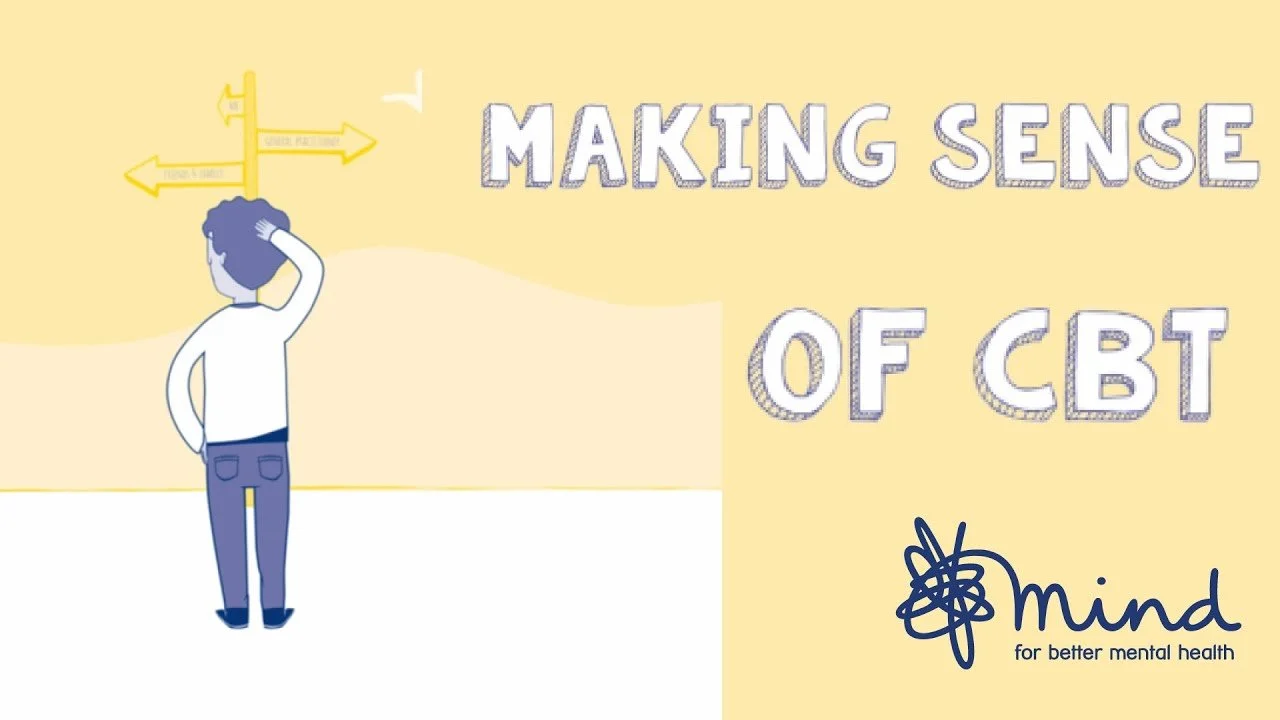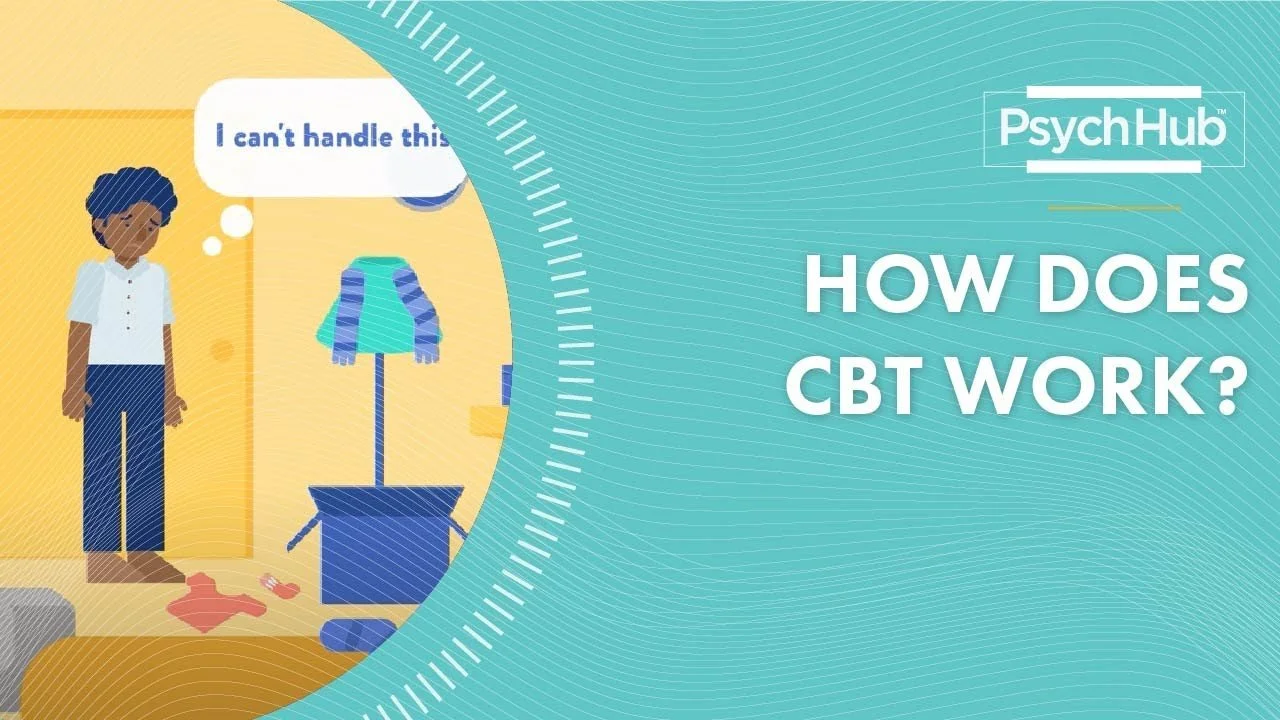A Guide to Cognitive Behavior Therapy
CBT stands for Cognitive Behavior Therapy, and it was founded by a psychiatrist named Aaron Beck in the 1960s. CBT is founded on the belief that how we think (cognitions), how we feel (emotions) and how we act (behaviors) all interact together. Especially, our beliefs define our feelings and our behavior. Hence, negative and unrealistic views can generate distress and result in issues.
In CBT, problems are broken down into 5 main areas:
situations
thoughts
emotions
physical feelings
actions
What is CBT?
CBT is a short-term, goal-oriented psychotherapy treatment that takes a hands-on practical approach to our problem-solving.
It's based on the connections between our thoughts, emotions, and behaviors and how they can influence each other. The goal is to change our patterns of thinking or behavior behind our difficulties and change how we feel.
Using CBT can be a great way to help you know what you want, set good intentions that fit your true self, and improve your behavior to get the outcomes you desire.
CBT is used to help individuals of all ages, but the treatment should be adjusted based on the client with whom the therapist is working.
What is the main purpose of CBT?
CBT aims to show you how you're thinking affects your mood. It teaches you to think less negatively about yourself and your life. It is based on the understanding that our negative thinking is a habit that can be broken like other bad habits.
The objective would be to change the way a person thinks about an issue that's causing them concern, the negative thoughts that cause self-destructive feelings and behaviors.
CBT is founded on several core principles, including:
Psychological problems are based, in part, on faulty or unhelpful habits of thinking.
Psychological issues are founded, in part, on learned patterns of unhelpful behavior.
People suffering from psychological issues can learn better-coping modes, thereby relieving their symptoms and becoming more effective in their lives.
Who Benefit the Most from Cognitive Behavioral Therapy?
CBT can be beneficial to just about anyone. It may, however, be most useful to people who have specific difficulties they'd like to solve. It's used to treat various psychological problems, including
Anxiety disorders.
Stress disorders
Eating disorders
Depression
Marriage and relationship problems
Phobias
Obsessive-compulsive disorder
Panic attacks
Addictions
And many more
How does it work?
One might imagine a person talking and a therapist solely listening when talking about therapy. In CBT, however, a balanced partnership is developed between a therapist and the client.
The client first starts by describing the issues they face and what they would like to see addressed. These then serve as the framework for each session's discussions. They will make increasingly progress each week as they work together on:
Focusing on these problems
Investigating potential solutions
Identifying useful coping mechanisms
Developing positive mental/behavioral patterns
What are Cognitive Distortions?
Cognitive distortions are irrational or detrimental thought habits. These negative thinking patterns can drain your motivation, weaken your self-esteem, and contribute to issues such as anxiety, depression, and substance abuse.
Many types of cognitive distortions amplify our negativity. These are some of them: Catastrophizing considering in the worst-case scenario. We are minimizing the positive.
Cognitive distortions are essentially erroneous patterns in thinking.
Personalization: Take things personally when they're not connected to or caused by you. Another example is assuming incorrectly that you've been intentionally excluded or targeted.
Polarized Thinking All-or-nothing Thinking. Ignoring the intricacy of the situation. In other words, seeing things in terms of extremes – something is either amazing or terrible, and you believe you are either perfect or a complete disaster.
Heaven's Reward Fallacy expects to be rewarded for sacrificing oneself. It manifests as the conviction that one's struggles, pain, and hard labor will be rewarded fairly.
No matter how hard we try or sacrifice, we may not always be able to reach our goals. Thinking otherwise is a potentially harmful thought pattern that can lead to disappointment, frustration, anger, and even depression if the hoped-for reward does not appear.
Overgeneralization Comes to a judgment about one occurrence and then applying that conclusion inaccurately to all situations.
Mental Filter focuses on the negative and ignores the positive. Similar to overgeneralization focuses on a single unfavorable piece of information while excluding all good ones.
Disqualifying the Positive The "Disqualifying the Pleasant" distortion, on the other hand, accepts positive experiences but rejects them rather than embracing them.
Where do Cognitive Distortions come from?
According to past research, people create cognitive distortions to cope with adversity in their lives. The more intense the negative events are, the more probable one or more cognitive distortions may develop. Based on one early hypothesis, cognitive distortions may have evolved as a form of evolutionary survival strategy for humans.
In other words, stress may drive people to adjust their thinking in ways that will help them survive in the short term. However, these thoughts are neither practical nor beneficial in the long run.
5 Frequently Used Techniques
1. Thought records
Cognitive-behavioral therapists utilize thought records to assist their patients in capturing, evaluating, and modifying their negative habitual thoughts.
Thought recordings are useful for determining whether or not your ideas are valid. They entail gathering and assessing evidence for and against a certain belief, allowing for an evidence-based determination of whether or not the belief is accurate.
Your therapist may even ask you to list the negative thoughts that occurred to you between sessions and positive thoughts you can choose instead.
We can evaluate the accuracy of our thinking by recording and assessing our thoughts, and we can frequently feel better by recognizing and addressing bias or misconceptions.
2. Journaling
Writing and journaling is a time-honored method of connecting with one's thoughts.
This method is used to acquire information on one's feelings and thoughts. A CBT journal can include, among other things, the time of the emotion or thought, the cause of it, the extent or severity of it, and how we reacted.
This strategy can assist us in identifying, describing, changing, adapting, or coping with our thought patterns and emotional tendencies.
3. Relaxation and stress reduction techniques in CBT.
In CBT, you may be taught some level of progressive relaxation techniques, such as:
Breathing exercises
Muscle relaxation
Imagery
4. Cognitive restructuring or reframing
This one involves taking a hard look at negative thought patterns.
Perhaps you may tend to over-generalize, assume the worst will happen or emphasize the importance of some minor details. Thinking that this way can affect what you do, or it can become a self-fulfilling prophecy.
Your therapist may ask about your thought process in certain situations to better identify negative patterns. Once you know them, you may learn how to reframe those thoughts to be more positive and productive.
For example, if you believe that to be a respected person, you must have a high-paying job, and then you are laid off from your high-paying work, you will begin to feel bad about yourself.
Rather than embracing this flawed idea that causes you to have bad thoughts about yourself, you may use this time to analyze what truly makes a person "respectable," a notion you might not have considered before.
5. Role-Playing
Role-playing can also help you work through different behaviors in potentially difficult situations. Playing out likely scenarios can lessen fear and can be used for:
Improving problem-solving skills
Gaining familiarity and confidence in certain situations
Practicing social skills
Assertiveness training
Improving communication skills
“You have considerable power to construct self-helping thoughts, feelings and actions as well as to construct self-defeating behaviors. You have the ability, if you use it, to choose healthy instead of unhealthy thinking, feeling and acting.”
What Does a (CBT) Session Look Like?
A therapist would usually work with a client in CBT sessions to help them recognize, comprehend, and alter their detrimental behaviors and beliefs, which they may not be aware of.
As the therapeutic process progresses, clients will learn to develop new and more effective ways of managing situations and interactions outside of sessions.
A client should have gained the coping mechanisms needed to effectively manage their mental health issues or other challenges at the end of therapy.
Compared to other types of therapy, CBT is known for being a relatively short-term commitment. While each person's mental health needs are unique, CBT can continue anywhere from 12 to 20 weeks, at which point some clients' emotional issues may begin to resolve or improve significantly.
Sessions are usually 30-60 minutes long and take place once a week or biweekly.
Conclusion
Treatment for most external wounds is usually uncomplicated. For example, you can apply antibacterial cream and a bandage when you cut your hand, and the wound will heal over time. You're almost ready to go.
It's not as simple to treat your cognitive processes, especially if they result from general anxiety, depression, or another psychological challenge.
Our negative thought patterns are like a paper cut that reappears even though you do not understand what's causing it. Maybe you don't even notice the cut. It won't sting until it begins to hurt. In many cases, it's about eliminating many harmful behaviors and mental conditioning that you may have picked up from others. If you believed that you had to be the greatest in school and life, you're probably predisposed to stressful perfectionism.
“Things may happen around you, and things may happen to you, but the only things that matter are the things that happen in you.”
You're consciously breaking a habitual thought pattern when you change how you think. You re-evaluate how you look at a situation, or even what you think about.
Thinking clearly will help to have more control over your behaviors and be better able to live out your very best self. Various strategies can be employed with CBT, such as medications, psychotherapy, and lifestyle adjustments.
Your therapist will help you determine which CBT method best suits your needs based on the challenges you're dealing with.





